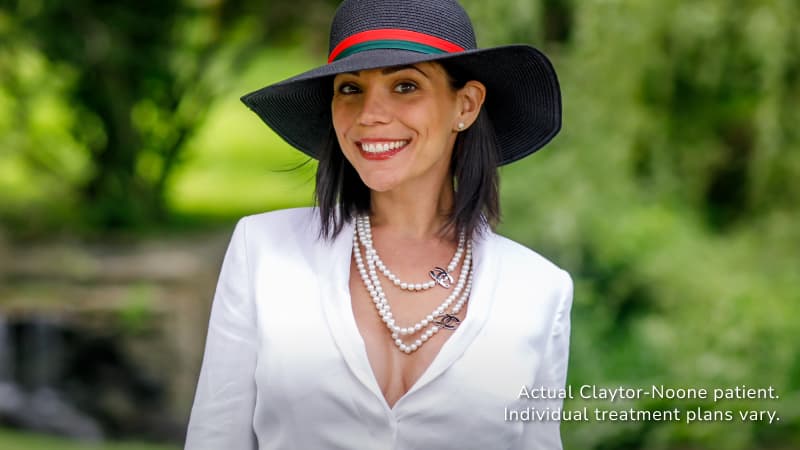Revision Breast Augmentation (Breast Implant Revision)
Are you thinking about a second breast implant surgery? Whether you have experienced a complication, are simply ready for a change in aesthetic, or are curious about an upgrade to newer silicone gel-filled implants, board certified plastic surgeon Dr. Brannon Claytor can help you determine the procedure to meet your goals effectively and safely.
Dr. R. Brannon Claytor
Dr. Claytor is board certified by the American Board of Plastic Surgery and holds over 20 years of experience as a cosmetic plastic surgeon. An innovator and teacher in the field of plastic surgery, he uses advanced techniques like the drain-free tummy tuck and deep plane facelift to streamline recovery and provide natural-looking, durable results.
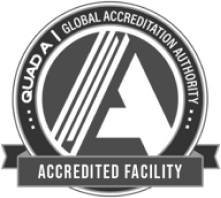
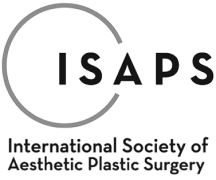
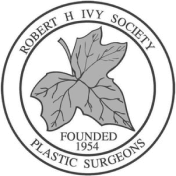

What do I need to know about revision breast augmentation?
Revision breast augmentation is often performed through a procedure very similar to the initial breast augmentation surgery, but with slight modifications made depending on the reason for revision. In most cases, Dr. Claytor is able to use the same incision location used in your original breast augmentation surgery.
Reasons for secondary breast augmentation
Breast implant leaks or ruptures
Saline breast implants that begin to leak are often noticeable, as the leaking breast will gradually decrease in size. The sterile breast implant saline filling is safely absorbed by your body, so a deflated saline implant is not an urgent medical emergency; however, you will want to schedule a consultation with a board certified plastic surgeon as soon as possible to consider a cosmetic revision surgery.
Patients with silicone implant leaks, on the other hand, may notice small changes in the shape of the breast or even development of capsular contractures. These are often detected in your regular ultrasound or MRI check-ups, which the FDA recommends 5-6 years after breast augmentation with silicone implants, as well as every 2-3 years after that. However, if you have a question or concern about your breast implants’ integrity or shape, it is always a good idea to schedule an evaluation with a board certified plastic surgeon. Dr. Claytor may recommend a mammogram or MRI to evaluate the status of your implants, if needed.
If the implant has deflated, your options are relatively straight forward. Today’s FDA-approved, round, and smooth-shelled silicone implants are considered to be the safest breast implants on the market, with a look and feel that closely mimics natural breast tissue. For these reasons, many patients opt for upgrading to a silicone implant if their saline implant has a deflation.
“There aren’t enough stars to rate Dr. Claytor! I had suffered for 16 years with breast implant from ovesized implants! I thought it was pain I would just live with until I got a scanned that showed implant rupture. This was a blessing in disguise because I sought the recommendation from a friend for a plastic surgeon. Once I had the name I didn’t hesitate to make an appointment! After my consult with Dr. Claytor / I knew before I left the office, I was scheduling my removal/replacement surgery! Dr. Claytor and his entire staff are second to none! Dedicated, caring, compassionate, professional, skilled, approachable- everything you want when making a decision like this! But let’s talk about the surgery itself! I can only say I wish I had done this 15 years ago!! The pain I lived with for 16 years was gone by the next morning! Gone! I am still amazed! I LOVE my results and thrilled that I put myself in the hands of Dr. Claytor! I have already recommended him to friends who are thinking about cosmetics procedures! When I left the office from my post-op visit, a woman at the elevator asked me what I thought of him! I gave her my review and she headed into the office immediately to talk to the staff! Again, I only wish I had done this procedure sooner!!”
— Actual patient of Dr. Claytor
Breast implant rippling
Another indications for a removal and replacement of an implant may be palpable (noticeable) edges of the implant or visible implant edge rippling. Should this be a condition that you have, a consultation with Dr. Claytor at our Bryn Mawr office will help you understand the anatomy that is affecting the appearance of your breast implants, and determine whether an implant exchange may be the right option for you. In certain cases, a breast fat transfer procedure may be used to improve the appearance of rippling.
- Key Benefits
- Glossary
- Improved Size and Shape: Revision breast augmentation allows for adjustments in implant size or shape.
- Correcting Complications: It addresses complications such as implant rupture, malposition, or capsular contracture.
- Enhanced Symmetry: Revision surgery can refine breast symmetry by addressing unevenness or asymmetry that may have developed over time.
- Updated Implant Technology: Allows for the adoption of newer implant technologies, materials, or textures for improved long-term results.
- Correcting Previous Surgeon Errors: Addresses errors or suboptimal outcomes from prior surgeries for a more satisfactory result.
Capsular Contracture: A condition where scar tissue tightens around the implant, causing discomfort and altering the appearance of the breast.
Seroma: A pocket of clear serous fluid that sometimes develops in the body after surgery.
Hematoma: A collection of blood outside of blood vessels which may occur after a surgical procedure.
Implant Malposition: Implants are not in the correct position, i.e. too low or too high on the chest wall.
Synmastia or symmastia: A condition where the implants are too close together in the center of the chest, often referred to as “uniboob”.
Implant Rupture: When the shell of the breast implant breaks or tears.
Double Bubble: Occurs when the implant is positioned below the natural fold of the breast, creating an unnatural appearance.
Mammogram: An X-ray image of the breast used to detect and evaluate changes in the breast.
Mastopexy: Another term for a breast lift surgery.
Rippling: Visible or palpable wrinkling of the implant on the surface of the breast and more associated with saline implants.
Pocket Revision Surgery: A procedure to adjust the space created in the breast to accommodate the implant.
Tissue Expander: A device used to expand the breast skin and muscle in preparation for a breast implant.
Autologous Tissue Reconstruction: Using a patient’s own tissues to rebuild the breast.
Capsulectomy: Surgical removal of the scar tissue capsule around the implant.
Alloplastic Materials: Synthetic, non-biological materials used in breast reconstruction or augmentation.
Inframammary Fold (IMF): The crease located under the breast where it meets the chest wall.
Subglandular Placement: When the breast implant is positioned behind the breast tissue but in front of the chest muscle.
Submuscular Placement: The implant is positioned beneath the pectoral muscle.
Axillary Incision: An incision made in the armpit area, often used for insertion of the breast implant.
Periareolar Incision: An incision made along the edge of the areola.
Biofilm: A group of microorganisms that adhere to each other on the surface of the implant, potentially causing infection and/or capsular contracture.
Acellular Dermal Matrix (ADM):A type of biomaterial used in breast implant surgery to provide support to the implant and surrounding tissues.
“A great experience in every way. Dr. Claytor was a very reassuring understanding and pleasurable Dr for a very personal experience. He explains everything in detail about what he is going to do and listens to your needs and expectations. I had implants removed that were inserted approximately 20 years ago. Over time they were very uncomfortable and became very hard which was encapsul and and very unnatural looking. The original implants were placed in front of the muscle. Dr. Claytor place the new implants behind my muscle which has left them soft movable and completely comfortable. And in hindsight I wished I had done this many years sooner. I can’t explain how happy I am with this procedure the doctor and all of the people involved in my care. I would highly recommend Dr. Claytor and his staff for anything you’re interested in having done to make you feel better about your appearance.”
—Dr. Claytor’s patient, via RealSelf
Choosing an implant size & procedure details
If your nipple position has changed or descended with time and the effects of gravity, you may decide to combine your revision breast augmentation with a breast lift, or mastopexy, which corrects sagging and creates a firmer, perkier breast shape and nipple position. A different implant size may also be desired several years after the initial procedure after the natural breast volume has been affected by weight changes, pregnancy, breastfeeding, or aging. Should you desire a change in the size of your implants, or a more lifted appearance, a consultation with Dr. Claytor at our Main Line office will help you select the new size you are considering.
Crisalix 3D Breast ImagingWe use Crisalix 3D breast implant imaging to help you visualize how different breast implants will look on your frame. Crisalix uses a 3D image of your body to take volumetric measurements. Like a virtual fitting room, it then allows you to “try on” different volumes—and see how they look in different types of clothing—while discussing your goals and options with Dr. Claytor. See how it works »
“The entire practice was very pleasant. I was very comfortable in the office. They provided efficient service in a timely manner. Dr. Claytor is absolutely amazing… He has a great bedside manner and a calming presence about him. He made me feel like I was important and listened to all of my concerns.”
— Actual patient of Dr. Claytor
Before & After Gallery
Dr. Brannon Claytor uses advanced techniques to provide natural-looking outcomes. See the results for yourself in our patient gallery.
Am I a good candidate for secondary breast implant surgery?
To be a good candidate for this procedure, you will likely have the following characteristics:
- You have experience a breast implant rupture, other complication, increased sagging, or asymmetry
- You have realistic expectations for the possible outcomes with surgery
- You are in good physical health and a non-smoker
- You are at a stable weight you plan to maintain
- You desire a change
Our patients elect to undergo breast augmentation revision for many different medical and aesthetic reasons. While we want to help you achieve your ideal look, patients also must have realistic expectations before undergoing surgery and be prepared physically for a healthy post-surgical recovery process.
Why choose Dr. Claytor for your plastic surgeon?
Double Board-Certified for a high level of safety and precision
Chief of Plastic Surgery at Main Line Health, a top health system
Board Member of The Aesthetic Society, shaping the future of aesthetics
8x Philadelphia Magazine Top Doctor for exceptional patient care
Recognized as one of America’s Best Plastic Surgeons by Newsweek
Drain-free recovery expert for faster, more comfortable healing
Deep plane facelift innovator and global educator
Active researcher in surgical and non-surgical aesthetic advancements
Highly regarded for his surgical expertise and outcomes, as well as his dedicated follow-up care



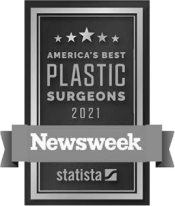
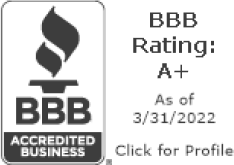
Claytor Noone Plastic Surgery is here to serve patients from Philadelphia, Bryn Mawr, Main Line, and the surrounding areas. Philadelphia double-board certified plastic surgeon Dr. R. Brannon Claytor has over 20 years of experience offering cosmetic plastic surgery procedures. A member of The Aesthetic Society’s Board of Trustees, the American Society of Plastic Surgeons (ASPS), and a Fellow of the American College of Surgeons (FACS), Dr. Claytor is dedicated to continuously advancing his surgical techniques and teaching his methods to colleagues at national meetings. In addition to his surgical work, Dr. Claytor the Chief of Plastic Surgery for Main Line Health Systems, and is a Clinical Associate Professor at Lankenau Institute of Medical Research.
Not only is Dr. Claytor a highly accomplished surgeon, but he has a patient-centered approach to each consultation: he takes the time to learn about your goals and values, and what you have in mind for your body, before suggesting a treatment plan. To learn if a you may be a good candidate for a revision breast augmentation procedure, you may call our Bryn Mawr office at (610) 527-4833 or contact us online to schedule a personal consultation with Dr. Claytor.
References »
Navanjun S. Grewal, Jack Fisher, Why Do Patients Seek Revisionary Breast Surgery?, Aesthetic Surgery Journal, Volume 33, Issue 2, February 2013, Pages 237–244, https://doi.org/10.1177/1090820X12472693
Forster NA, Künzi W, Giovanoli P. The reoperation cascade after breast augmentation with implants: what the patient needs to know. Journal of Plastic, Reconstructive & Aesthetic Surgery. 2013 Mar;66(3):313-22. doi: 10.1016/j.bjps.2012.09.033.
Clough R, Darragh L, Maclennan L, O’Donoghue JM. Revision Surgery to Improve Cosmesis with Immediate Implant-Based Breast Reconstruction. JPRAS Open. 2021 May 21;29:106-112. doi: 10.1016/j.jpra.2021.04.006.
Spear SL, Low M, Ducic I. Revision augmentation mastopexy: indications, operations, and outcomes. Annals of Plastic Surgery. 2003 Dec;51(6):540-6. doi: 10.1097/01.sap.0000096450.04443.be.
Areas Served:

Medically reviewed by Dr. R. Brannon Claytor — Updated on Nov 4, 2024

